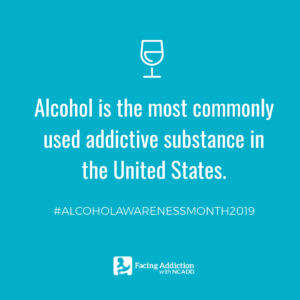Eighty years ago this month 5,000 copies of “The Big Book” — titled Alcoholics Anonymous (AA) — were printed, according to Alcoholics Anonymous World Services. Within its bindings is a program outline for people recovering from alcoholism—known today as alcohol use disorder.
While initial sales were severely lacking, as of today the Fellowship’s manuscript has sold more than 30 million copies. Each year, approximately one million copies of the basic text are distributed around the globe, in 67 languages.
From humble beginnings to a significant beacon of hope for countless people, such is the story of 12 Step recovery. Mutual help groups, aided by The Big Book, show those struggling in the darkness of addiction how living life on life’s terms is possible.
There are other programs of addiction recovery in existence today that have helped many men and women, aside from AA. However, the 12 step method is by far the most utilized regarding alcohol and substance use disorder. Drug and alcohol use is but a symptom of an underlying mental illness. Such that working a program of recovery has proven to be helpful for anyone regardless of how their disease manifests.
Despite most discussions about use disorders focusing on drugs today, it is vital to include alcohol in the national conversation about addiction. April is Alcohol Awareness Month 2019!
Facing Addiction with the National Council on Alcoholism or NCADD organizes the annual observance. Now is an excellent opportunity to talk about alcohol use disorder (AUD), its causes, and addiction recovery. The more open we talk about alcohol, the more lives saved. Right now, millions of Americans require help for an AUD, and fortunately, assistance is within reach.
Confronting Alcohol Use Disorder In America
An estimated 16 million people in the United States have an alcohol use disorder, according to the National Institute of Alcohol Abuse and Alcoholism (NIAAA). And untold millions more are on a trajectory toward having problems with the substance down the road.
There are many myths and inaccuracies swirling around alcohol use. When people do not have the facts, they are at risk. Alcohol Awareness Month is partly about helping people develop a better understanding.
It is of utmost importance that we equip young people with some of the facts, so they can make informed decisions about using alcohol. Even though the vast majority of people will never develop AUD, alcohol use can still affect men and women’s health negatively.
The BMJ reported that the number of Americans, ages 25- to 34-, who died annually from alcohol-related liver disease nearly tripled between 1999 and 2016. Moreover, hazardous alcohol use affects men far more often than women. However, recent studies show that women are slowly closing the gap.
Drinking alcohol cut the lives of some 3 million people short in 2016. Young men who engage in heavy alcohol use is an especially pervasive problem. The World Health Organization (WHO) reports that 7.7 percent of global deaths involve men and alcohol use.
Alcohol Awareness Month 2019
While alcohol is ubiquitous in today’s world, there is no safe amount of alcohol! That is the conclusion of a recent study about drinking around the world. In spite of the available research, Facing Addiction with NCADD points out that the pressure to drink is everywhere. The typical American will see 100,000 beer commercials before turning 18.
People who start drinking by 15 are four times more likely to develop alcohol dependence. The organization notes that young people who engage in hazardous alcohol use, like binge drinking, face higher risks of addiction. The NIAAA defines binge drinking as four drinks for women and five drinks for men—in about 2 hours.
One in every 12 American adults, or 17.6 million people, suffer from alcohol use disorder or alcohol dependence. While such statistics are hardly uplifting, it’s worth to remember the living examples of recovery. NCADD estimates that almost 20 million individuals and family members are in long-term recovery.
Alcohol Awareness Month is about educating young people and spreading the message that alcohol use disorder recovery is possible. Evidence-based treatments exist that can help people get on the road toward long-term recovery. This year’s theme is “Help for Today, Hope for Tomorrow.”
All month there are events to help educate people about the treatment and prevention of alcohol use disorder. Since many people do not fully grasp yet that they have an unhealthy relationship with drinking, Alcohol-Free Weekend is April 5-7, 2019. The upcoming event is an excellent opportunity for people to gauge alcohol’s role in their lives. Those who struggle to abstain are encouraged to reach out for help.
Help for Today, Hope for Tomorrow with PACE Recovery Center
If you are one of the millions of men who struggle with alcohol use, then please know that you are not alone. Alcohol use disorder is a treatable mental health condition, and it is possible to find long-term recovery.
At PACE Recovery Center, we offer evidence-based addiction and behavioral health treatment for men. Our male clients significantly benefit from being in a gender-specific environment. With decades of professional experience, PACE empowers men of all ages to fulfill their dreams.
Please contact us today to learn more about our multidimensional approach to bringing about lasting recovery.


